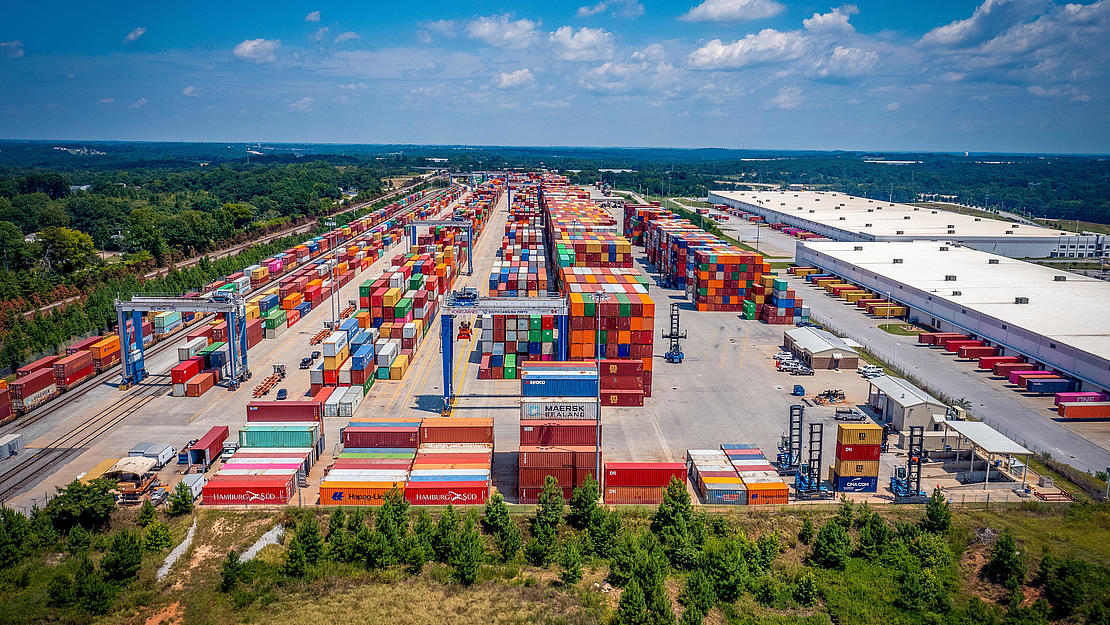29.04.2022
HPC validates inland port for South Carolina Ports
South Carolina Ports has commissioned HHLA subsidiary Hamburg Port Consulting (HPC) to assess the capacity expansion of the Inland Port Greer, one of its intermodal rail terminals located in the Northern part of the US state. The assessment was used to validate HPC’s original capacity and review options for expanding total capacity, ensuring the rail-served inland port can handle growing cargo volumes for customers. SC Ports operates multiple cargo facilities in South Carolina, among them the seaport in Charleston and its inland port in Greer, which extends the Port of Charleston’s reach 212 miles inland via a rail link that enables the smooth movement of goods for customers.

Extending the range of the seaport's economic influence has been a driving factor for the development and construction of SC Ports’inland port in Greer. In light of the growing container volumes handled atInland Port Greer, SC Portscommissioned HPC to develop a capacity improvement plan for the terminal with the aim of evaluating the potential for expansion as a timely response to future volume developments.
"As operators, we aim for flexibility in responding to the supply chain disruptions that are more and more becoming a new normal, while also considering our planned expansion efforts to meet our customers’ needs,” said Steve Kemp, Senior Director Intermodal, Chassis and Operations Projects at SC Ports. "We opted to have our yard and equipment capacity plans reviewed by independent specialists to be prepared for meeting future volume demand."
After providing a development plan for the facility a few years ago, HPC has now prepared an update, taking into consideration the impacts of ongoing supply chain disruptions in North America and the need for more capacity to handle customers’ growing supply chain needs. Amongst others, the layout concept and equipment procurement plan for long-term expansion have been generally validated within the framework of a sensitivity analysis. HPC has analysed the influencing factors under different dwell time scenarios to map the supply chain resilience. As a result, some adjustment measures have been suggested, making the facility capable of handling up to 300,000 rail units.
"Our clients want answers to whether their planning is sufficient to cope with various future scenarios," says Christoph Schoppmann, Project Director and responsible for intermodal planning at HPC. "With resilient planning, they can give their customers the unprecedented flexibility and control required by manufacturers with tight production lines, and retailers with high demands for efficiency and reliability of their supply chain."
Thanks to the HPC-internal’s "Intermodal Planning Model", all traffic and volume flows on the terminal can be mapped and assessed. "We consider all possible terminal resources such as tracks, lift equipment, yard, empty yard, gate, etc., individually and in combination with each other," says Schoppmann. "As a result, the customer enjoys a better understanding of the options and can make well-informed decisions on making the facility fit for future growth."
HPC has extensive intermodal and rail terminal planning expertise. The consulting firm for ports, terminals and hinterland connections has already implemented more than 130 intermodal projects worldwide of which 60 have been in North America.